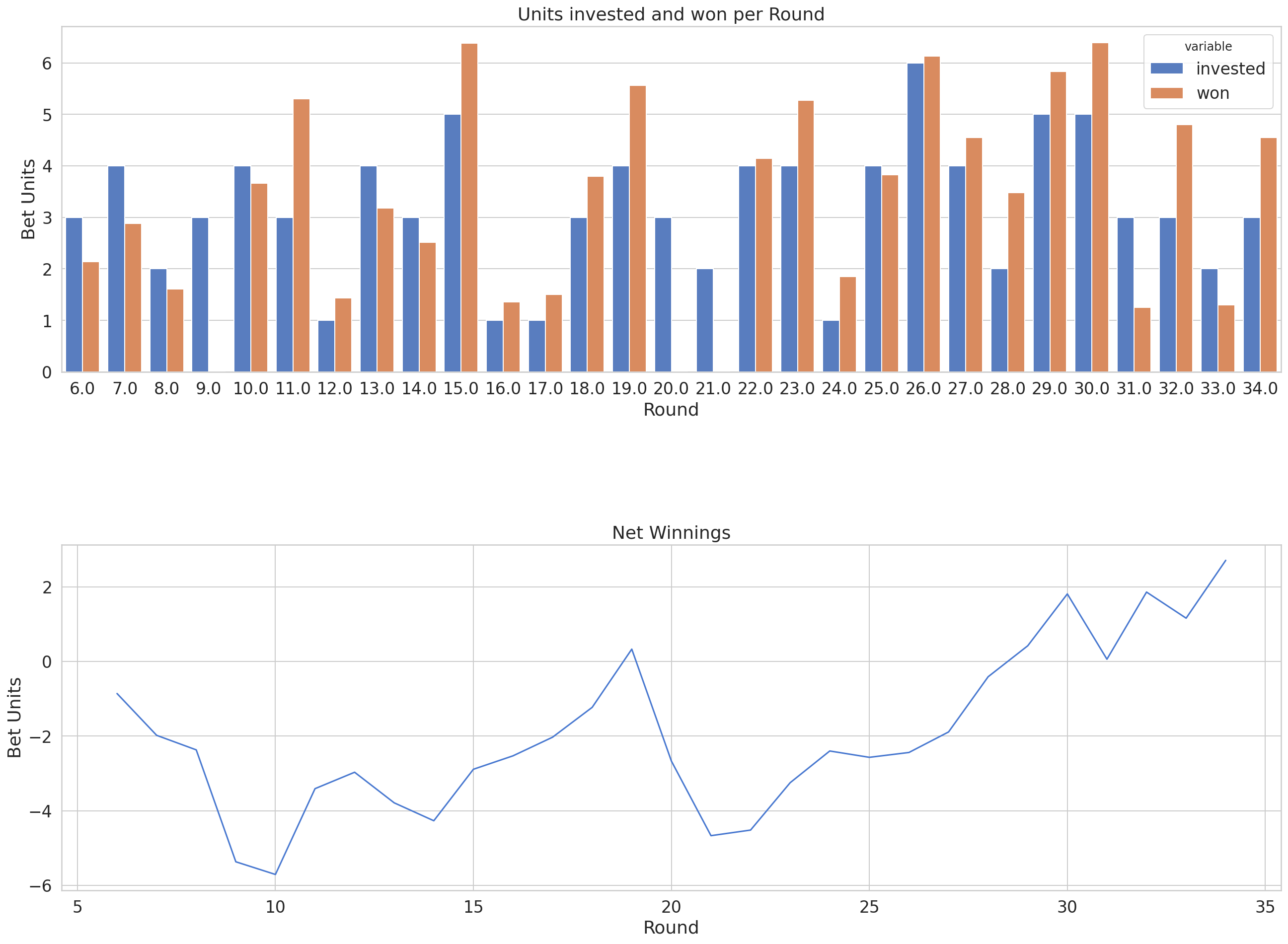How To Make A Betting Model
The concept of a winning sports betting system seems simple. If you flip a coin to pick games, you can win 50% of the time. When you factor in the vig charged by bookmakers, you have to win 52%to 53% of the time, depending on the vig you pay, to turn a profit.
Jan 03, 2021 The model enters Week 17 on an incredible 119-77 run on top-rated NFL picks that dates back to the 2017 season. The model also ranked in the Top 10 on NFLPickWatch three of the past four years on straight-up NFL picks and beat more than 95 percent of CBS Sports office pool players three times during that span. Clearly, one does not set out to create a sports betting model without an initial goal or basic knowledge of mathematical concepts. There's a reason betting models are only common for sportsbooks or full-time bettors. They take time to create and then you have to tweak them if something is off. It's an ongoing process that changes by the season. The easiest and most common way to do arbitrage betting is placing a bet on a bookmaker and then laying the same outcome on a betting exchange (i.e. Betfair or Smarkets). We can use a simple arbitrage calculator — the same as a matched betting calculator — to work out how much we need to bet against (i.e. ‘lay’) our bookmaker bet and to.
This means that to develop a winning sport betting system, you just need to be able to beat a coin flip by two to three percent. Surelywith the amount of statistics and metrics and computer power available in today’s world, this is a realistic possibility.
The 52% to 53% estimates listed above only consider spread betting and totals, but the concept is the same if you bet on money lines. The percentages are different depending on betting onunderdogs and favorites, but to make a long-term profit, you still only need to develop a system that operates slightly better than a coin flip.
Even though building a winning system seems like it’s possible, not many are able to do it. This page is designed to help you learn how to build a winning sports betting system.
They invest a great deal of resources and time into setting lines that can’t be exploited. They also try to determine what winning bettors do, and go to great lengths to make those winningsystems stop working.
I read an interview that a big sports bettor gave, and he described it as a race between him and the sportsbook. He constantly came up with ways to win and they constantly tried to eliminate hisedge.
His description is a good way to summarize your long-term battle with the bookmakers. A winning betting system is not a static thing. It has to grow and improve over time if you want to continuewinning.
Here’s an example:
Many NFL bettors remember when most home underdogs offered value. Smart bettors figured out that they could bet on every home underdog and turn a profit. The bookmakers were undervaluing theability of home teams in match-ups involving strong road teams.
This created a situation where a simple system (in this case, betting on home underdogs) was profitable. This was even written about at the time, which is one of the reasons it no longer works.

The bookmakers saw that a percentage of bettors were making consistent profit on home underdogs, and they started changing the lines. The books quickly destroyed this system by learning how muchthey needed to adjust the lines before releasing them to the public.
When this happened, a few smart sports bettors were able to find value in some of the games where the bookmakers moved the lines too far to compensate for the home underdog bias.
The value wasn’t available in every game, but in some games the line was moved too far, and there was value on the road favorite’s side instead of the home underdogs.
This dance between the bookmakers and smart sports bettors continues today, and will continue as long as there’s a sports betting market.
Ever wondered how you are actually doing in sports betting?
Sports Betting Model
Just like tracking your finances can be an eye opening experience (I spent how much at restaurants last month?!), tracking your bets can shed some light on your performance.
How To Make A Betting Model In Word
Download the free sports bet tracking spreadsheet below to get started (available for both Excel and Google Sheets):
Bet Tracker Spreadsheet: Instant Insights
If you want to measure your performance and see where you are succeeding and failing, you need to track it.
With this free tool, you can see your performance broken down by various dimensions.
Have a great ROI on betting NBA 2nd halves? Getting solid closing line value on NFL point spreads? This spreadsheet allows you to answer questions like this and more.
How to use the spreadsheet
While the spreadsheet is pretty straightforward, I’d like to walk you through how it works.
How to track sports bets
Everything lives in the “Bet Log” tab. This is the only place information is manually entered. Once the data is entered there, all other tabs will automatically populate.
In the “Bet Log” tab, blue columns are required while red columns are optional. The more information you input, the more useful the spreadsheet will be.
Entering things like the closing line, while slightly annoying, will also be the most important to your success.
How to analyze performance
Each tab will have different graphs and tables that show your performance. The beauty of this is that you can filter the data by any dimension you like.
Any yellow cell is an “input” cell that can be changed. All of these are dropdowns that are pre-populated based on the information you enter in the Bet Log.
How to add more leagues and teams
To add new leagues and teams, you will do so in the “REF” tab. This tab holds all of the lookup information for the dropdowns throughout the spreadsheet.

Again, the cells available to modify are in yellow. You can add the following dimensions:
- Leagues (ex: WNBA)
- Teams (ex: Chicago Sky)
- Tags (ex: 2nd half)
Bet Tracker Spreadsheet Metrics
Deciding what to track is important in determining how you measure success. The spreadsheet tracks the following key metrics:
Closing Line Value
Closing line value (CLV) is a measure of how much better or worse the odds you bet at were compared to where they closed.
If you believe the markets you are betting into are efficient (NFL point spreads, MLB moneylines, etc.), then CLV is a great predictor of long term success.
All you need to do is input the odds you placed your bet at as well as where the odds closed. Preferably you use a market making sportsbook like Pinnacle to decide what the “true” closing line was.
Profit
Profit is about as simple as it gets. Are you making or losing money?
While this is the “bottom line”, surprisingly it isn’t always predictive of long term success. Still, you will obviously want to see how much money you have made or lost.
ROI
This is what most people tend to look at. It is a measure of how profitable you are relative to how much you are risking.
While at the end of the day, the money in your pocket is what matters, this metric focuses more on results rather than process and is a measure of efficiency.
ROI isn’t as predictive of long term winning as CLV, but is useful to track to see where you stand.
Risk
This one is simple, yet will likely give you insights into where you are putting your money.
If you have a model, does it consistently value the Dallas Cowboys differently than the market? Thus making many of your bets on the Cowboys? Analyzing your risk by league/team/bet type can give you these types of answers.
Bankroll
Bankroll will track our running total of how much money you have in your accounts across all sportsbooks. You can also see this trended over time to help you see any changes in your betting strategy and how that has affected your bankroll.
It is very useful to see, at a glance, where your money lies. Is 95% of our bankroll at FanDuel? Maybe you should shift some to DraftKings.
Bet Tracker Spreadsheet Dimensions

Having these metrics available is important, but insights really come from slicing the data by different dimensions.
League/Team
Tracking your performance by league or team can give you clues into where your strengths or weaknesses are.
Do you watch every second of every New York Knicks game? Think you have an edge on Knicks games? You can find out using the spreadsheet.
Same goes for leagues. Do you follow NFL closely but use strictly numbers for NCAA Basketball? Compare the performance of the two and see what’s working.
Bet Type
Looking at performance by bet type can also shed some light on your process, especially if it is model driven.

Track your performance by the following bet types:
- Spread
- Moneyline
- Total
- Prop
- Future
You can also use the “Tag” field to designate special types of bets. For example, if you want to see your performance on moneylines for NBA 2nd halves, you would put “2H” (or something similar) in the Tag field and “moneyline” in the bet type field.
Date
A common way to analyze performance is to look at metrics trended over time.
Look at any of the metric/dimension combinations above trended over any time period you’d like.
Want to see your performance over the last 14 days? Or how about the last 12 weeks? Both are possible here.
Google Sheets Sports Betting Tracker
How To Make A Betting Model
The sports betting tracker is also available on Google Sheets. While the features are the same as the Excel file, Google Sheets has some notable benefits:
Excel Betting Model
- Available/online at all times
- Can enter bets on your phone using the Sheets app
- You don’t need to be at a computer to enter your bets
- Google Sheets auto saves any changes
- Allows multiple users to be in the sheet at the same time and make changes